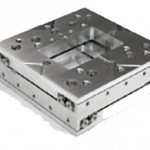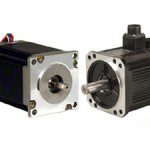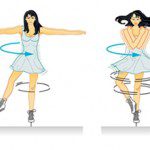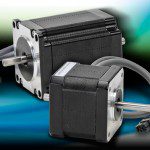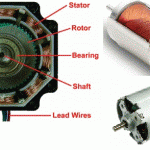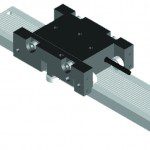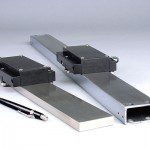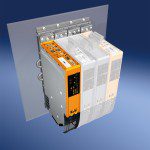There are two forces in piezo motor operation that are often confused: stall force and holding force. The stall force is the maximum force a motor can hold while running (i.e. in a dynamic state) before stalling occurs, while the holding force is the maximum load a motor can hold while powered-down (i.e. in a static […]
FAQs + basics
FAQ: What benefits do piezo motors offer?
Piezo motors rely on piezo materials, which are ceramics that change shape when an electrical field is applied, to produce vibrations that cause motion—either linear or rotary. (Conversely, piezo materials can also produce electricity when mechanically loaded.) There are several principles on which piezo motors can operate, with the most common of these being the use of ultrasonic […]
What’s the difference between servo and closed-loop stepper motors?
Servo and stepper motors have similar construction and share the same fundamental operating principle. Both motor types incorporate a rotor with permanent magnets and a stator with coiled windings … and both are operated by energizing or applying a dc voltage to the stator windings, which then causes the rotor to move. However, this is […]
FAQ: What is servo motor inertia and why does it matter?
Inertia is an object’s resistance to a change in speed. To determine the inertia of an object, its mass is multiplied by the square of its distance from the axis of rotation. A familiar demonstration of inertia is a figure skater on the ice. When she spins with her arms close to her body, her mass […]
FAQ: What are lead-lag stepper motor controls?
Lead-lag controls or compensators are pieces of programming in control systems that improve frequency response. A lead control can increase a system’s stability or its response speed. A lag control can reduce steady-state errors. Different combinations change output in different ways. A note on terminology: The terms controller and compensator have several different meanings. Some […]
FAQ: What is closed-loop control with load-position control?
Load-position control is a form of closed-loop stepper-motor control. It’s true that stepper motors can run open loop—as they don’t need sensor-feedback-based controller corrections. So, stepper-motor circuits are simpler and the motors are easy to implement … but if anything goes wrong in the application, the open-loop stepper won’t respond to the new condition. In […]
FAQ: How to pick between stepper motor, brush dc, and brushless motors?
When choosing a motor for an application, consider key differences between each motor’s operation. Stepper motors: Performance positioning Stepper motors work for precise positioning and control with torque. Intermittent moves is what steppers output best. Tip: Don’t use stepper motors for continuous operation. When applications need motors to operate nonstop, steppers exhibit dwindling efficiency and […]
FAQ: What’s the difference between variable-reluctance linear and hybrid linear steppers?
Linear motors come in different mechanical and electromechanical arrangements to satisfy the requirements of different applications. For example, brushless linear motors (capable of forces to 2,600 N or more) work well in heavy robotics or material-handing applications. Linear ac-induction motors output 2,000 N to satisfy heavy-conveyor parameters. In contrast, iron-core brushless linear motors deliver a […]
FAQ: How do linear stepper motors compare to familiar rotary types?
Stepper motors go into linear actuators in two different ways: Stepper motors that are traditional rotary motors couple to mechanical rotary-to-linear motion devices (often in the form of a threaded shaft that mates with traversing nut or carriage) to produce linear motion. In this actuator setup, the motor output shaft usually couples to the screw […]
The hardware and software of a PC-based motion controller
Physically, a PC-based controller is made up the same kinds of hardware components as most personal computers — a processor, some memory and an interface bus. The interface bus is a high-speed dedicated bus that provides all types of information to and from the processor. In personal computing, the hardware I/O consists of a keyboard […]


